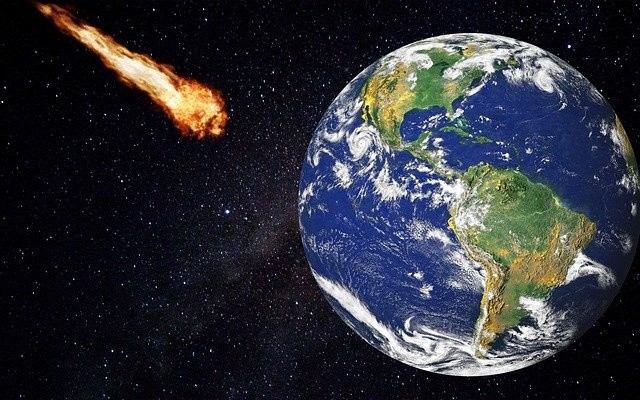
An asteroid that is estimated to be 1.2 miles wide will fly by Earth next week, but it will not collide with the planet. The said asteroid seems to know about the pandemic that is happening on planet Earth right now since it appears to be wearing a face mask, according to new images from Arecibo Observatory in Puerto Rico.
The asteroid, named 52768 or 1998 OR2, was first spotted in 1998. On April 29, the asteroid will pass within 3,908,791 miles of Earth, moving at 19,461 miles per hour. That orbit is 16 times faster than the distance between Earth and the moon. Back when the asteroid was first discovered, experts estimated the impact of the asteroid will hit Earth, it is large enough to cause global effects according to NASA.
Anne Virkki, head of planetary radar at Arecibo Observatory, said in a statement that the small-scale topographic features such as hills and ridges on one end of asteroid 1998 OR2 are fascinating scientifically. But since the Earth is dealing with COVID-19 currently, the features make it look like 1998 OR2 remembered to wear a mask.
The flyby of the asteroid is expected to happen on April 29 at 5:56 a.m ET, according to NASA's Center for Near-Earth Object Studies. The center tracks Near-Earth Objects or NEO's that could collide with Earth.
Also Read: Potentially Hazardous Asteroid Hurling Towards Earth, May Skim Planet on Thursday, NASA Says
The Arecibo Observatory
The Arecibo Observatory is a National Science Foundation facility that is managed by the University of Central Florida. A team of experts has been monitoring this near-Earth asteroid and other NEOs. The observatory is supported by NASA's Near-Earth Object Observations Program and the observatory has been analyzing asteroids since the mid-90s.
Even during the pandemic, the scientists at Arecibo are continuing to make their observations on behalf of planetary defense. In line with social distancing guidelines, the observatory has limited the number of scientists and radar operators at the facility and they are wearing masks during observations.
Is the asteroid hazardous?
The asteroid was classified by the observatory as a potentially hazardous object because it is bigger than 500 feet and it comes within 5 million miles of Earth's orbit. The experts at Arecibo can monitor the asteroids and use observations to determine their path if the future to see if they pose a risk to planet Earth.
According to Flaviane Venditti, a research scientist at the observatory, the radar measurements allow them to know more precisely where the asteroid will be in the future, including its future close approaches to Earth. In 2079, asteroid 1998 OR2 will pass Earth about 3.5 times closer than it will this year, so it is important to know its orbit precisely.
This upcoming asteroid is the largest asteroid expected to flyby Earth within the next two months, but it is not the largest ever. That title belongs to the asteroid 3122 Florence or 1981 ET3, which flew by Earth and missed colliding with the planet on September 1, 2017. It will make another pass again on September 2, 2057. That asteroid is estimated to be between two and a half and five and a half miles wide.
© 2025 HNGN, All rights reserved. Do not reproduce without permission.








